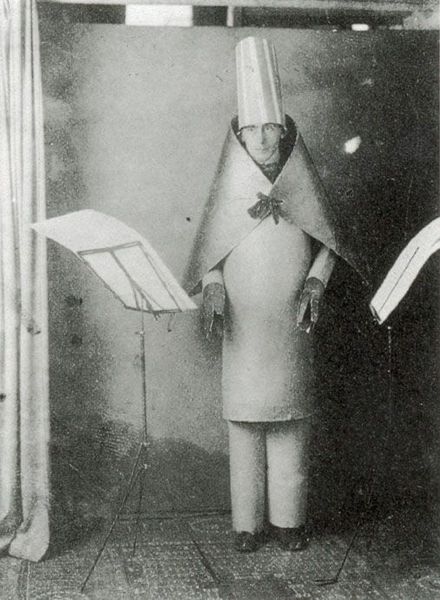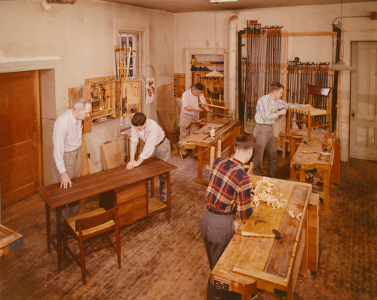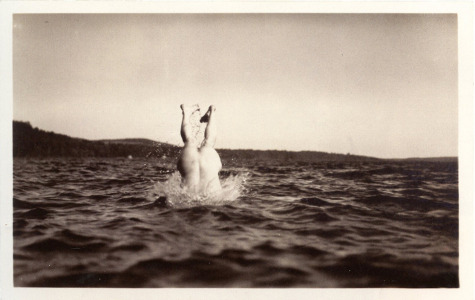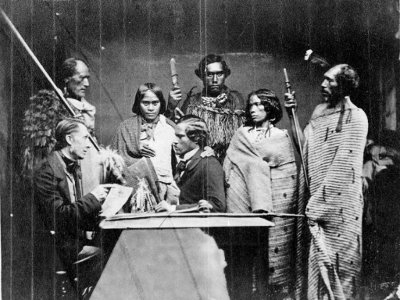| Line 10: | Line 10: | ||
From the very beginning I wanted to use PD to perform some kind of human function, to reveal some form of judgement or thought process which would speak about its own inability to do so. And so I wanted to create some kind of patch that would interest itself in the nature of computer programming, while also displaying some level of critical self awareness. | From the very beginning I wanted to use PD to perform some kind of human function, to reveal some form of judgement or thought process which would speak about its own inability to do so. And so I wanted to create some kind of patch that would interest itself in the nature of computer programming, while also displaying some level of critical self awareness. | ||
==the image== | ===the image=== | ||
I decided to pursue the idea of a dadaist rearrangement of text based on images. I was thinking about the ways in which the Dadaists used the idea of automatic and chance-based occurances in order to remove or at least diffuse their own artistic control and intention over an artwork. This led me to the idea that images could be an interesting starting point, and that I could use PD to perform some kind of human (albeit dadaist) function in 'reading' the images and using them to compose text in some way; the idea being that this 'reading' would vary in accordance with the image being used and thereby create the illusion of personality or discernment on the part of the patch. | I decided to pursue the idea of a dadaist rearrangement of text based on images. I was thinking about the ways in which the Dadaists used the idea of automatic and chance-based occurances in order to remove or at least diffuse their own artistic control and intention over an artwork. This led me to the idea that images could be an interesting starting point, and that I could use PD to perform some kind of human (albeit dadaist) function in 'reading' the images and using them to compose text in some way; the idea being that this 'reading' would vary in accordance with the image being used and thereby create the illusion of personality or discernment on the part of the patch. | ||
Revision as of 18:54, 27 January 2013
Hugo Ball at the Cabaret Voltaire, Zurich, 1916 photographer unknown
My Project
background
From the very beginning I wanted to use PD to perform some kind of human function, to reveal some form of judgement or thought process which would speak about its own inability to do so. And so I wanted to create some kind of patch that would interest itself in the nature of computer programming, while also displaying some level of critical self awareness.
the image
I decided to pursue the idea of a dadaist rearrangement of text based on images. I was thinking about the ways in which the Dadaists used the idea of automatic and chance-based occurances in order to remove or at least diffuse their own artistic control and intention over an artwork. This led me to the idea that images could be an interesting starting point, and that I could use PD to perform some kind of human (albeit dadaist) function in 'reading' the images and using them to compose text in some way; the idea being that this 'reading' would vary in accordance with the image being used and thereby create the illusion of personality or discernment on the part of the patch.
Moses
what does Moses do?
Moses composes haiku poetry, or rather, recomposes the lines of poetry that are available to it in response to an image.
the idea
Obviously there are two variables in the patch which guide it, conceptually: imagery and text.
The imgages being used are all located on the internet. Furthermore, they are located on the basis that they are the work of an 'unknown photographer'. In selecting these images I am interested in the idea of a deficient human element in the image. Photography is essentially the act of a machine and the direction in which photography is heading is increasingly removing the significance of the human as an operator of image capturing devices. This is something I am interested in and I felt it was interesting grounds for my pure data patch to explore.
The text being used is also drawn from the internet. It is Japanese haiku poetry, translated into English, from some of the most significant poets to make use of the Haiku. I was interested in using this text sourse, specifically, for two reasons. Firstly, the Haiku has always been a thing of contrast. Traditionally, Haiku poetry has a 'cutting' aspects whereby two
how does Moses work?
Moses reads the RGB levels in an image by using the 'pix mean color' object. These levels are 'unpacked' and channeled into three different but identical sub-patches. Here, the levels filter through an number of 'moses' objects that result in the incoming value aligning with one of sixteen possible numbers. These numbers are outputed from each of the three identical sub-patches into another sub-patch. This sub-patch uses a 'textfile' object. The three incoming numbers dictate which lines from the textfile are to be used. These lines of text are extratced from the file and printed into the dialogue window.
The
Results
On the death of his child
And dry my dreaming but still ...
Insatiable fleas
Women planting rice
Drawn up from my frozen well ...
Weird hollow echo
Issa stepchild bird
Dew evaporates and all our world is dew ...
Black cloudbank broken
But their ancient song
Flip-flapping across the sky
Wild geese write a line




